This post may contain paid links. If you make a purchase through links on our site, we may earn a commission.
Ready to start cooking like a 5-star chef? Then my Dry Aged Prime Rib Recipe is the perfect place to start! Dry aged rib roast is the height of luxury: and the secret is, it's so easy to do at home. You'll never want to serve prime rib any other way!
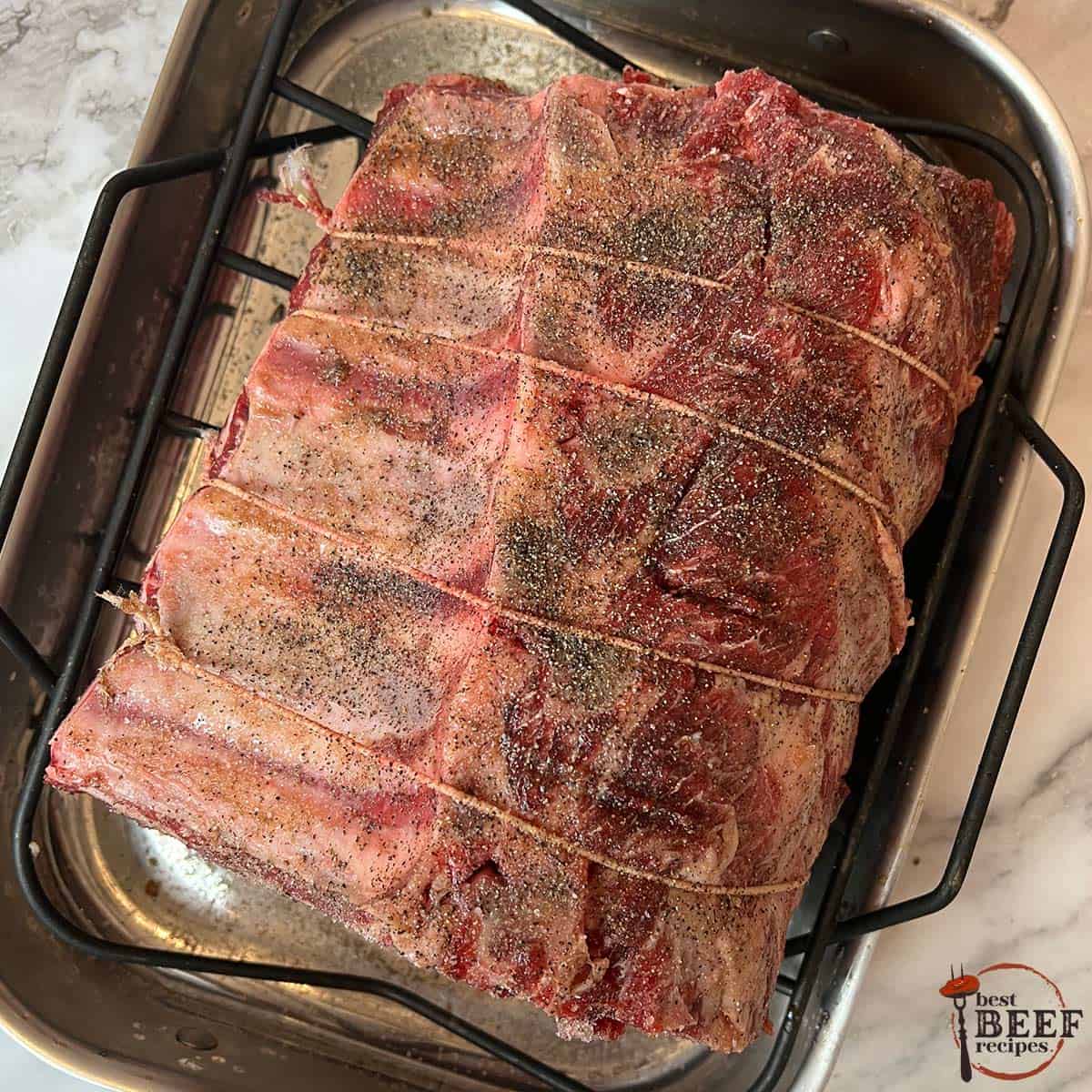
Jump to:
Dry Aging Prime Rib
There are some dishes that change how you view yourself as a home chef. For me, that dish was learning how to dry age rib roast! Prime roast is already a meal for truly special occasions, so it's only natural to want to make it extra special. But is it really possible to do at home?
As it turns out, it absolutely is! Not only is dry aging rib roast easier than you could ever imagine, it also takes basic pantry ingredients and just some room in the fridge. There's nothing like seeing a prime ribeye roast dry aging to get excited for supper!
And you would never believe how good dry aged prime rib is. The dry aging process breaks down the proteins, rendering the meat unbelievably soft and tender, with a fuller and richer flavor than any other beef. Get the best out of your prime rib by dry aging it!
Just be sure to plan ahead! Dry aging is easy, but it takes a long time. Start the dry aging 10-20 days beforehand to give it proper time to age.
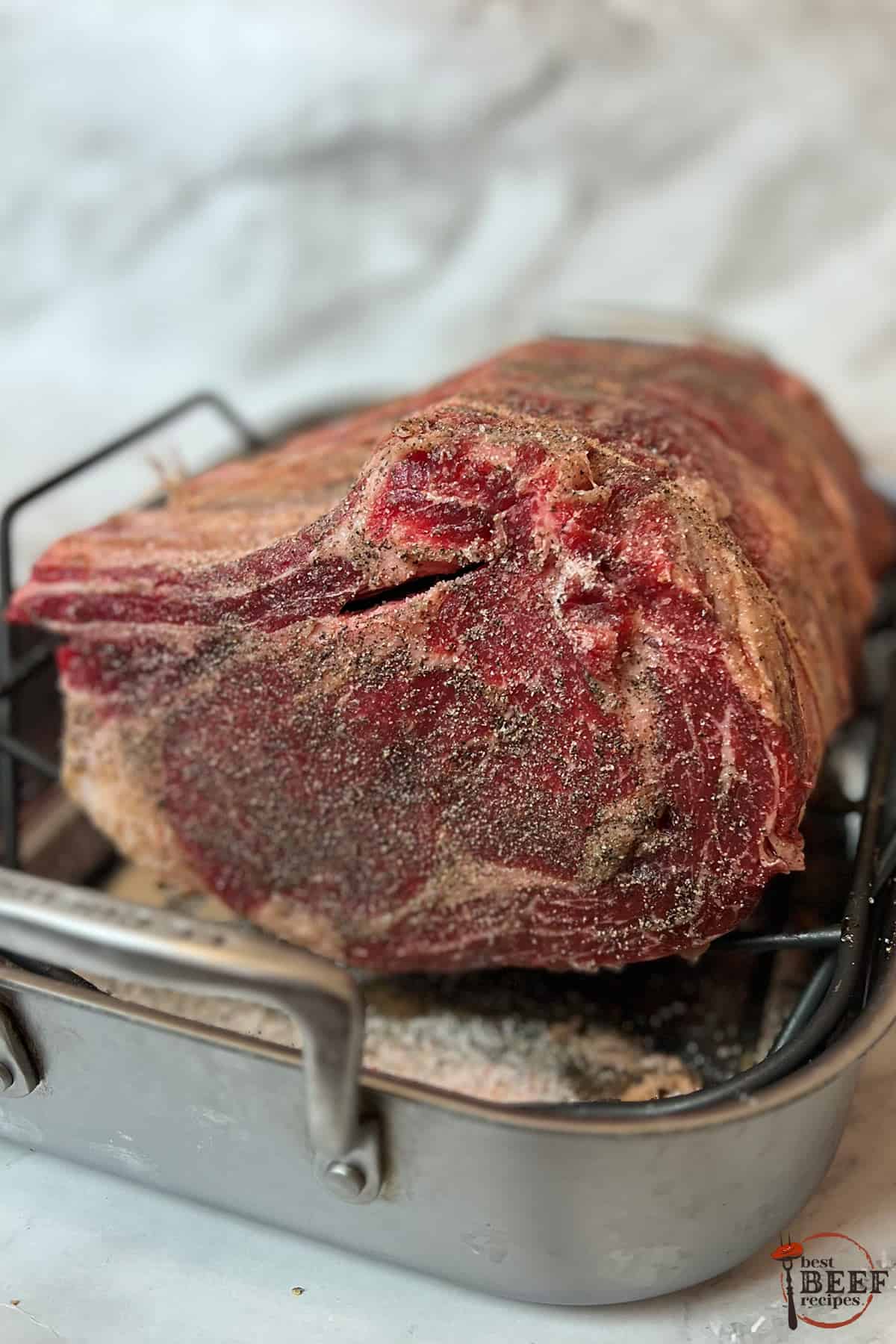
Dry Aged Prime Rib Ingredients
- Prime rib roast
- Soy sauce
- Salt
- Pepper
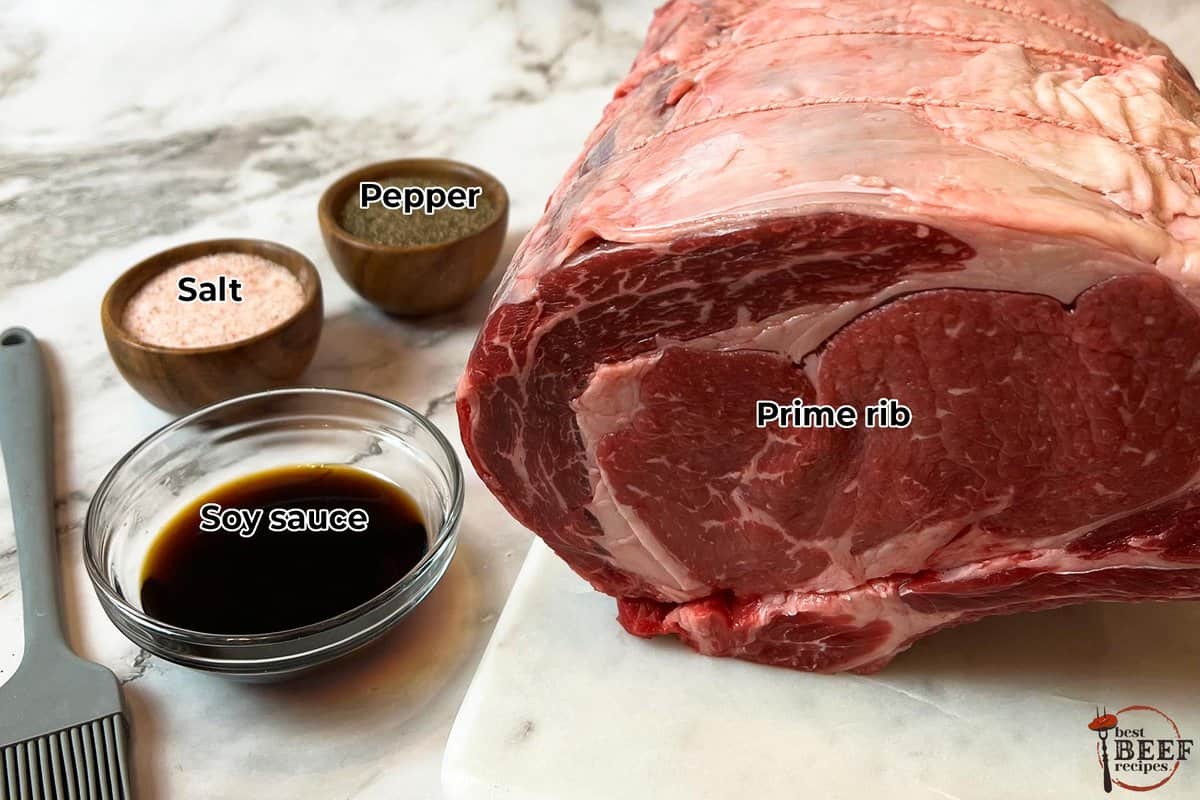
Dry Aging Prime Rib Instructions
- Prepare a roasting pan with a rack, and place the rib roast on the rack. Pat it dry all over with paper towel.
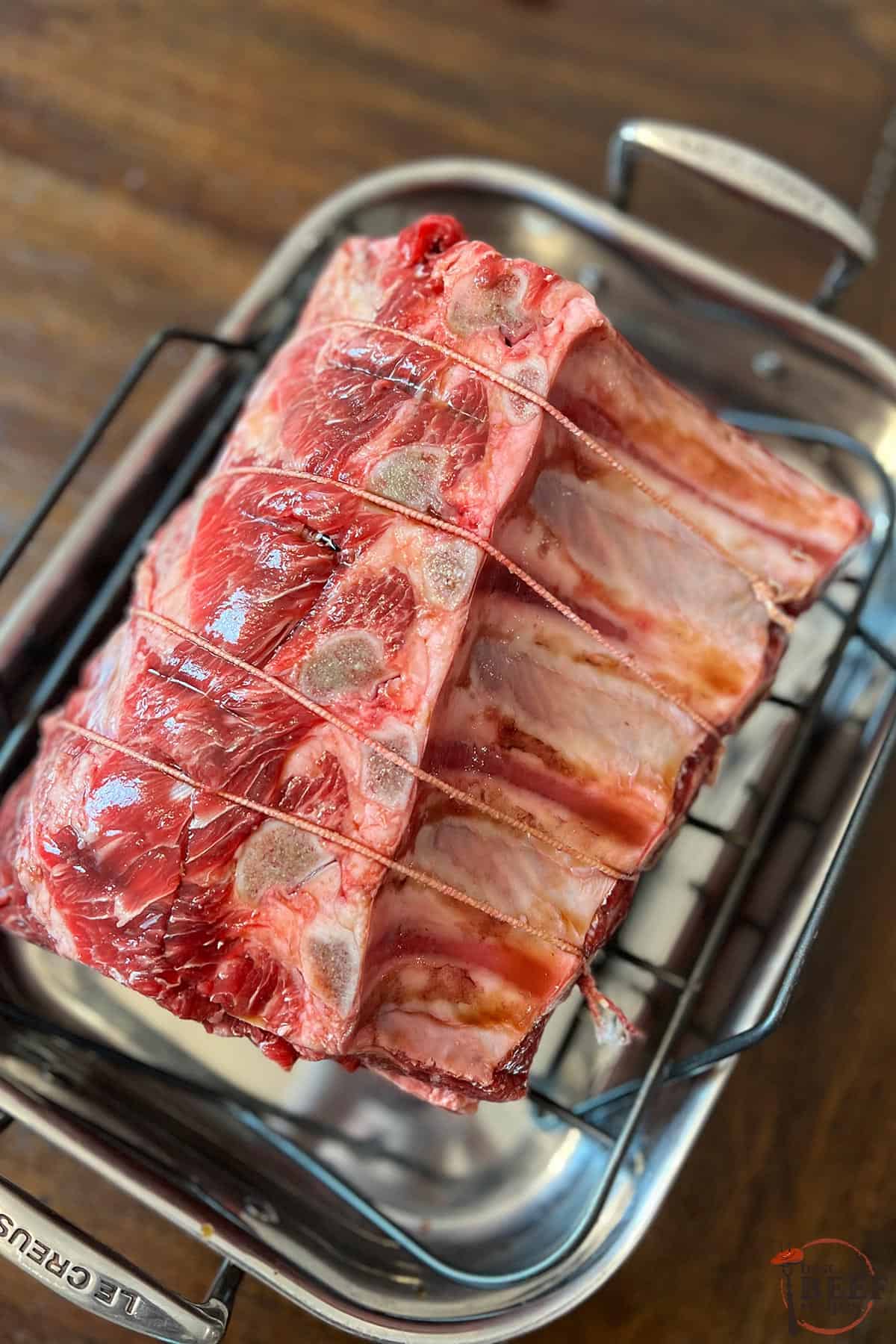
- Use a basting brush to brush the roast all over with soy sauce, on all sides of the meat.
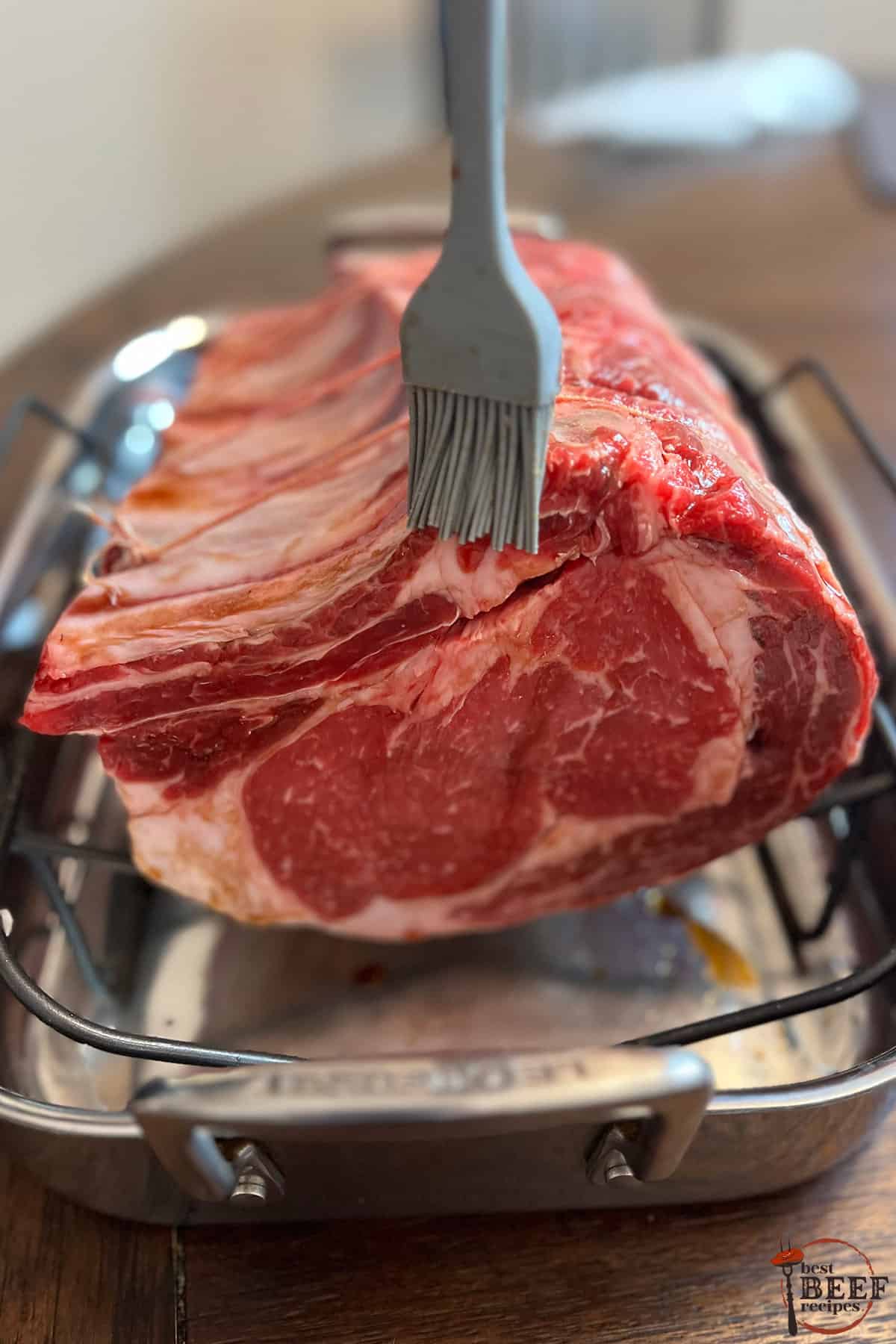
- Coat all sides of the meat very generously with salt and pepper.
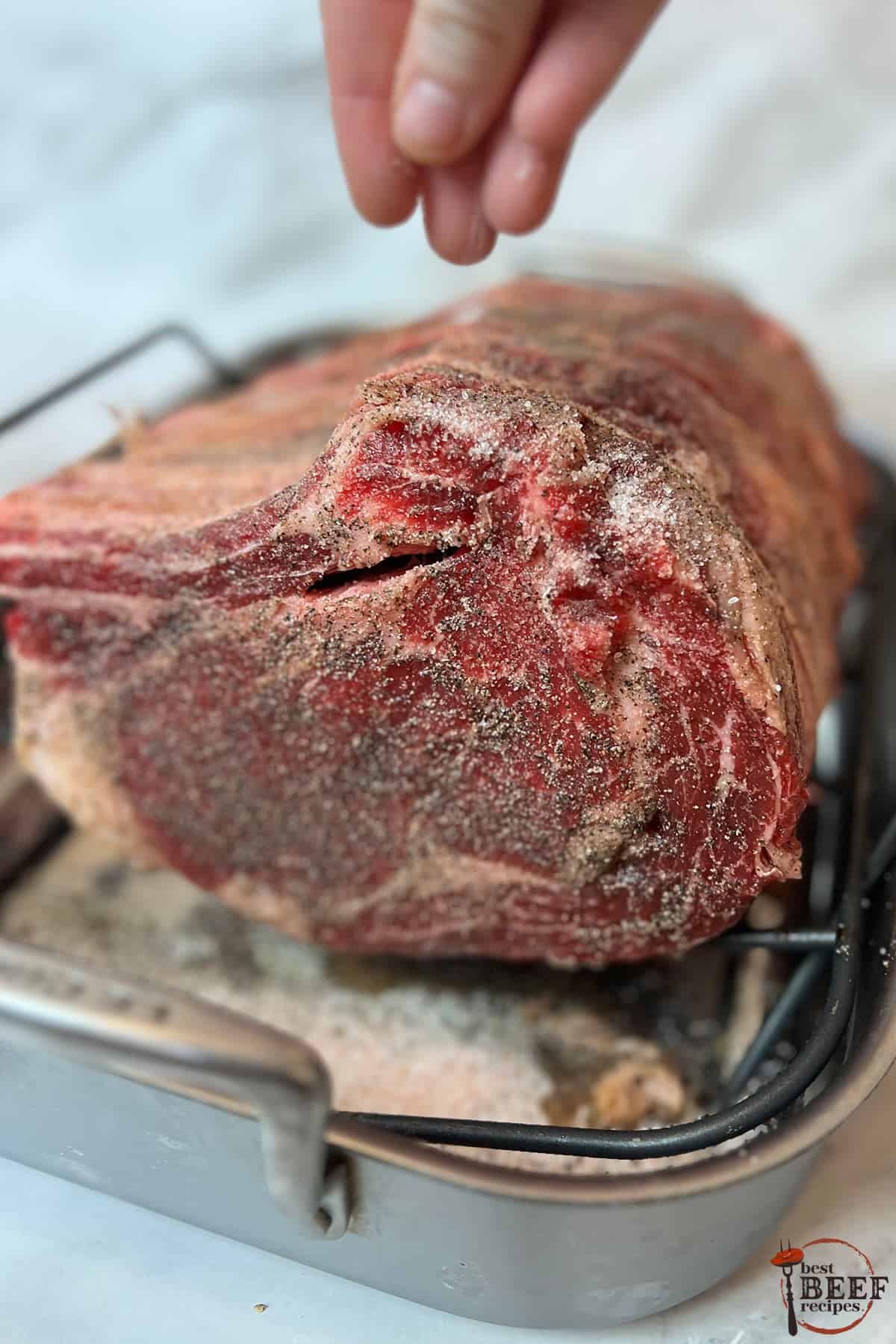
- Place the roasting rack and prime rib in the fridge, uncovered, and let it rest for 10-20 days.
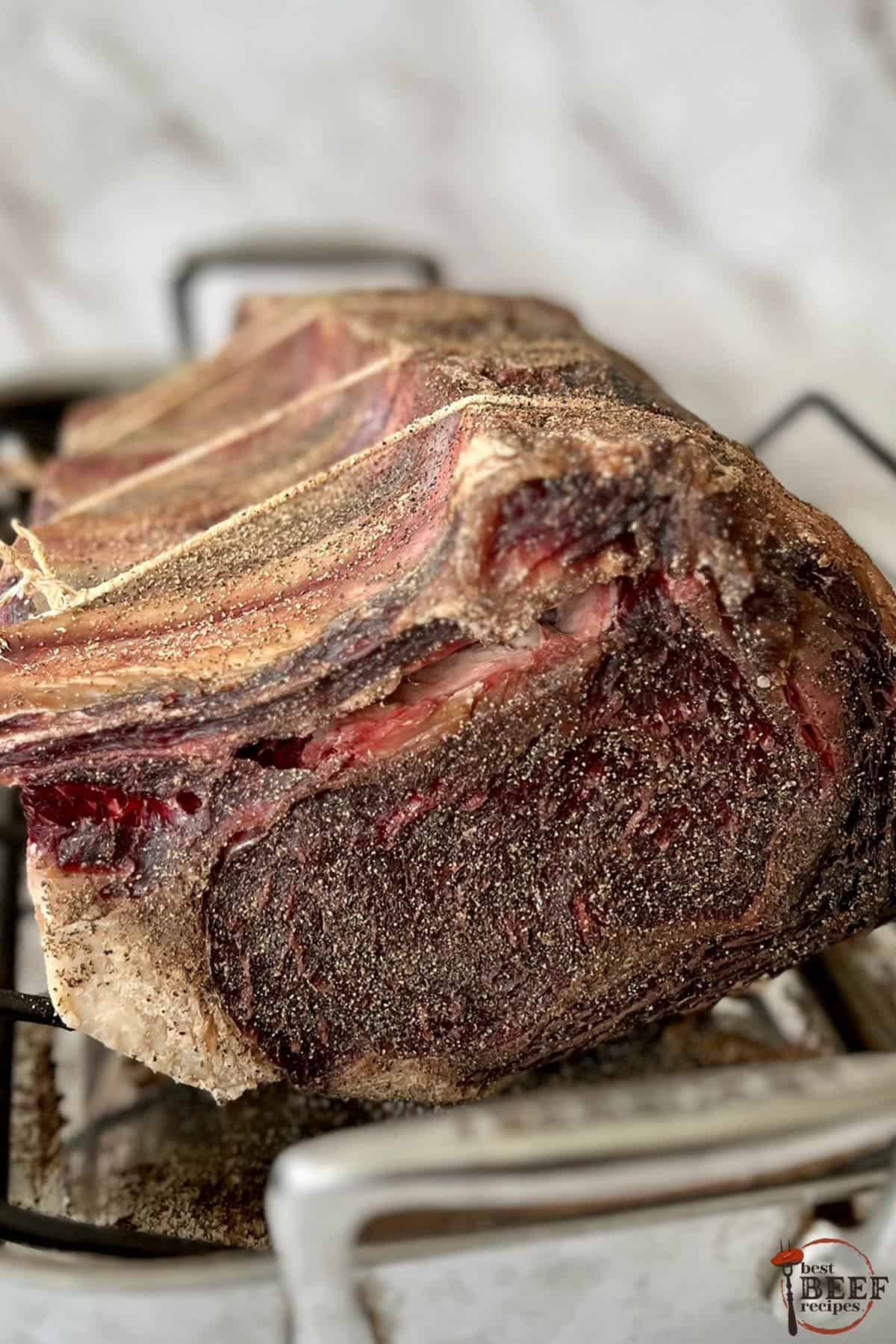
- Once it's done, you'll see that the surface of the meat is darker and dry in appearance. Remove from the fridge, let rest 30 minutes, then cook as desired!
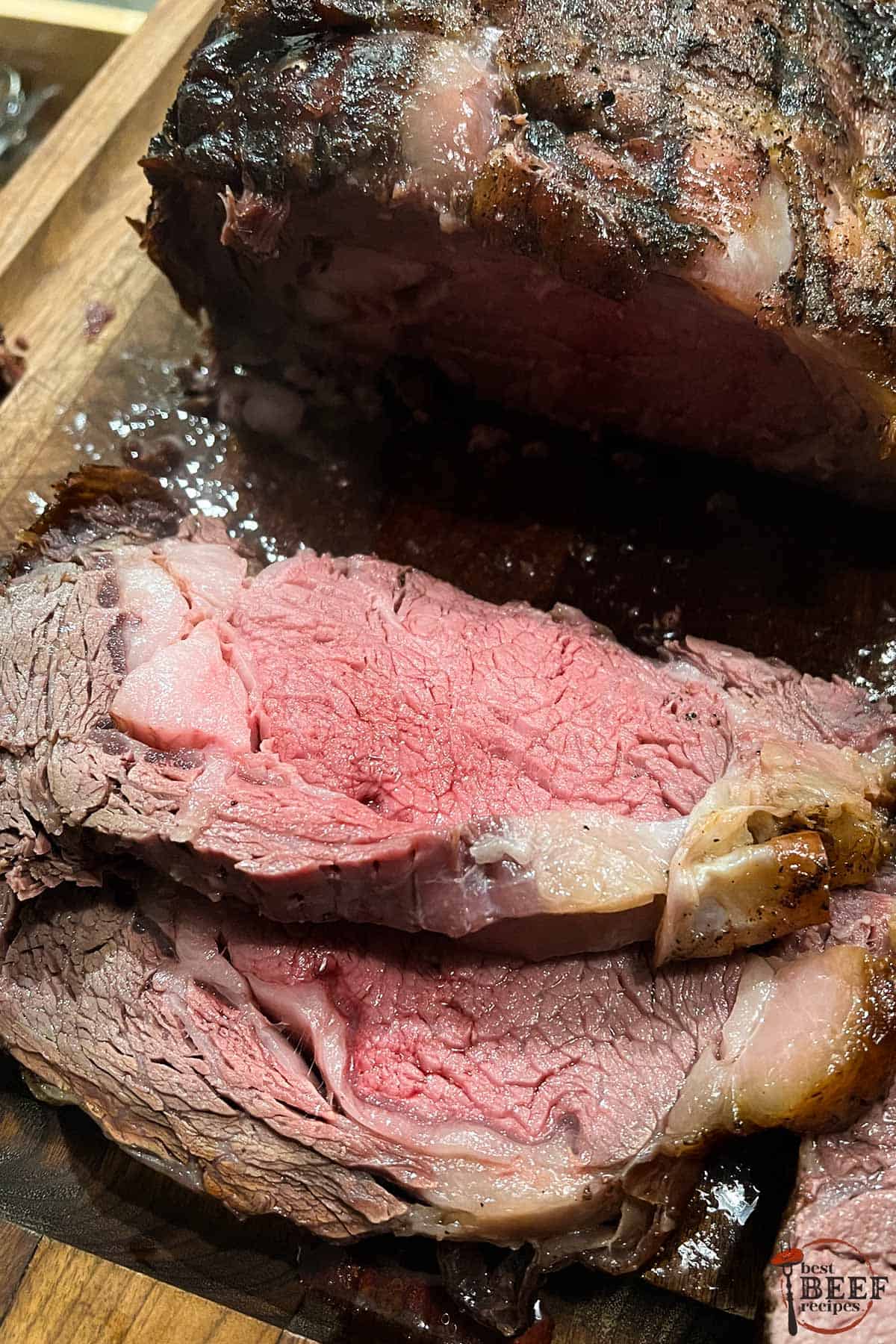
Tips for Dry Aging Prime Rib
- For best results, use a bone-in prime rib. The bones help retain moisture and flavor in the meat, which is especially important with dry aged rib roast!
- Make absolutely sure to use a roasting pan with a rack to raise the rib roast while dry aging it so the cold, dry air perfectly circulates around the beef. This is important to get rid of all moisture.
- You don't need to worry about tying the prime rib as it ages, but tie the prime roast before cooking it. Dry aging makes the meat so tender and soft, it needs to be held together or it can fall apart from the weight of the bones!
- If you don't want the fridge to smell like beef, place a box of baking soda next to the rib roast in the fridge. This will keep the smell down.
- This process is easy, but it takes a long time and a lot of fridge space. Plan accordingly to set aside enough space without crowding too many things around the beef! Some may also wish to use a special Dry Aging Refrigerator.
Prime Rib Cooking Time in Oven
For slow roasted prime rib, set your oven temperature to 200°F (or 93°C) and roast for approximately 40 minutes per pound.
| Prime rib weight | Roasting Time |
|---|---|
| 4 lbs. | 2 hours 40 minutes |
| 5 lbs. | 3 hours 20 minutes |
| 6 lbs. | 4 hours |
| 8 lbs. | 5 hours 20 minutes |
| 10 lbs. | 6 hours 40 minutes |
Prime Rib Temperature
See my prime rib temperature chart for more info!
| Beef Doneness | Internal Temperature |
|---|---|
| Rare beef temp | 125°F - bright red in the middle |
| Medium-rare roast | 135°F - warm red in the middle with slight pink around the edges |
| Medium roast | 145°F - warm pink throughout |
| Medium-well roast | 150°F - slightly pink at the center |
| Well-done roast | 160°F - little to no pink throughout |
Dry Aged Rib Roast FAQ
You can and should dry age meat in the refrigerator! Refrigerators circulate air continuously and keep the temperature constant, making it the perfect environment for dry aging meat. The low temp and circulated air keep the meat from spoiling, letting it age beautifully. Use a roasting pan with a rack so the air circulates completely around the beef, and keep it towards the back of the refrigerator for the coldest air possible.
Prime rib is a large and heavy cut of meat, so it takes a long time for the salts to permeate the meat and draw out the moisture. For an average bone-in prime rib, it will take anywhere from 10-20 days, depending on your fridge, the weight of the rib, and temperature.
Dry aged ribeye roast has a uniquely rich, bold flavor with a subtle umami not found in other methods of preparing prime rib. This strength of flavor makes dry brine a truly unique prime rib roast rub! If you've never tried dry aged meat before, you have to try this recipe!
How to Cook Dry Aged Prime Rib
- Smoked Prime Rib
- Sous Vide Prime Rib
- Slow-Roasted Prime Rib
- Instant Pot Prime Rib
- ...Or check out my comprehensive master post on How to Cook Prime Rib!
The great thing about dry aged rib roast is that dry aging is actually just a fancy prime rib dry rub! That means that it serves the same purpose as prime rib rub recipes, and how you cook it is up to you. And I have so many great ways to cook prime rib!
Remember, dry aging prime rib changes the color of the meat. This means that gauging doneness by the meat color won't be as accurate as you may be used to, so make absolutely sure to use a meat thermometer and cook to at least 125°F. Check my prime rib temperature chart for more details!
Sauce for Prime Rib
The perfect prime rib deserves the perfect sauce! Don't miss out on these great picks, sure to elevate even the most luxurious rib roast dry brine.
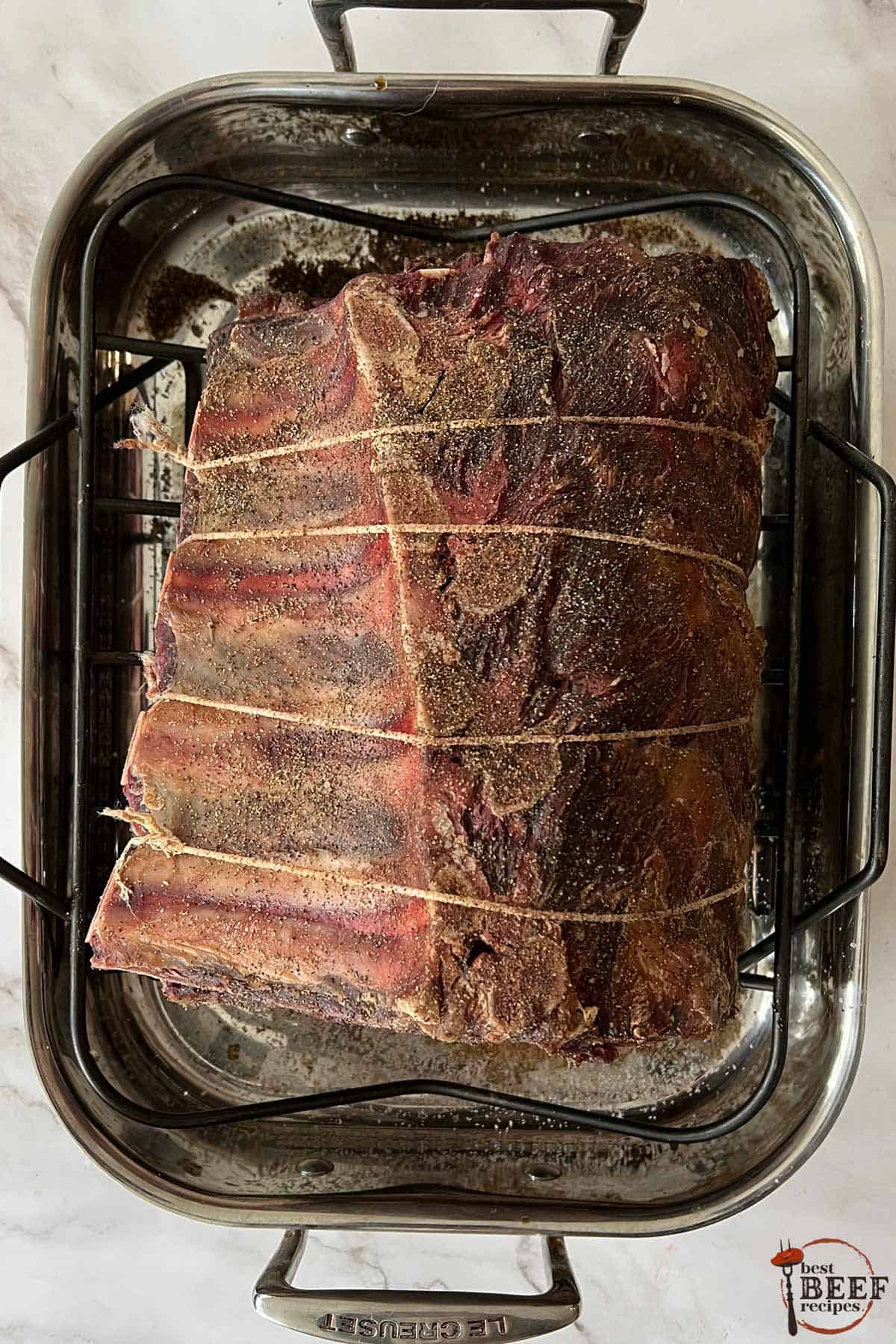
📌 Pin it for later!
Did you enjoy this page? Save it on Pinterest for later!If you enjoyed the recipe, leave a comment and a rating below!
📋 Recipe
Dry Aged Prime Rib
Equipment
- Basting brush
- Fridge space
Ingredients
- 1 large Prime rib bone-in
- ½ cup Soy sauce
- Salt enough to cover
- Pepper enough to cover
See our Beef Temperature Chart for helpful tips on cooking any cut of beef!
Instructions
- Prepare a roasting pan with a rack, and place the rib roast on the rack. Pat it dry all over with paper towel.1 large Prime rib
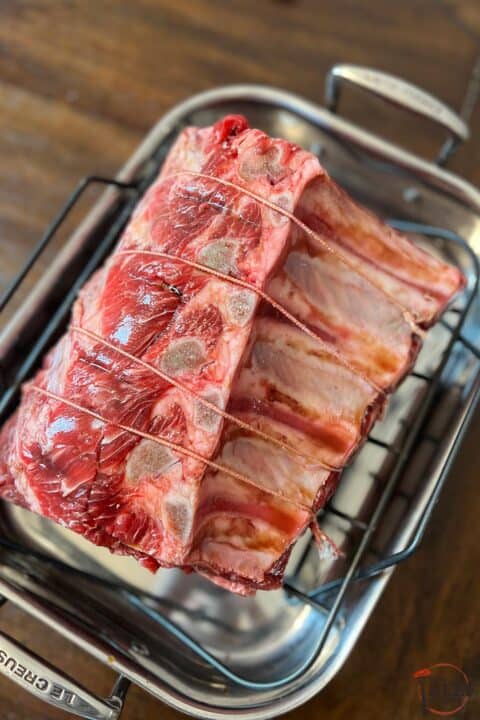
- Use a basting brush to brush the roast all over with soy sauce, on all sides of the meat.½ cup Soy sauce
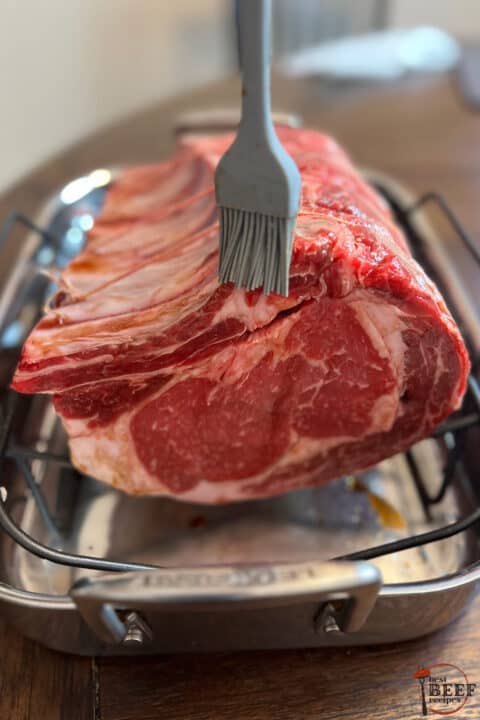
- Coat all sides of the meat very generously with salt and pepper.Salt, Pepper
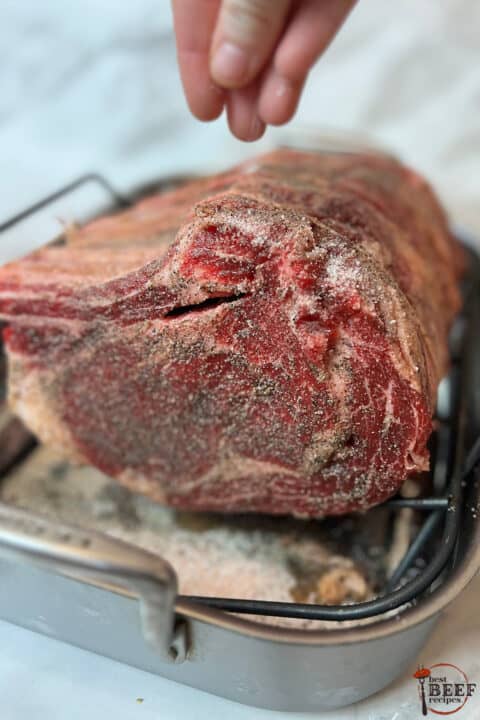
- Place the roasting rack and prime rib in the fridge, uncovered, and let it rest for 10-20 days.
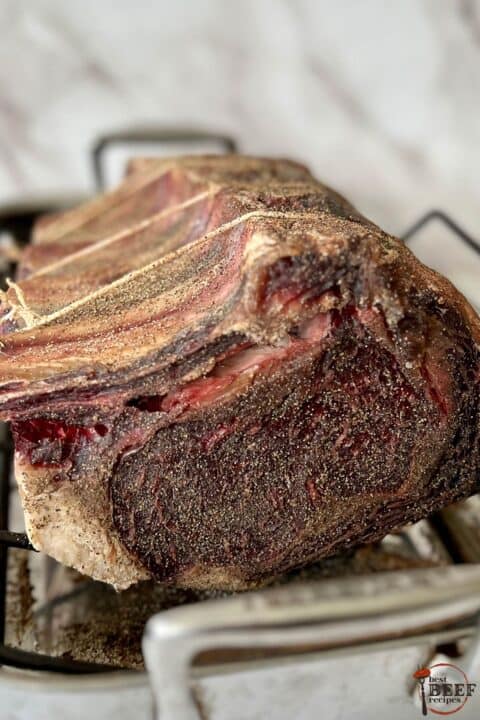
- Once it's done, you'll see that the surface of the meat is darker and dry in appearance. Remove from the fridge, let rest 30 minutes, then cook as desired!
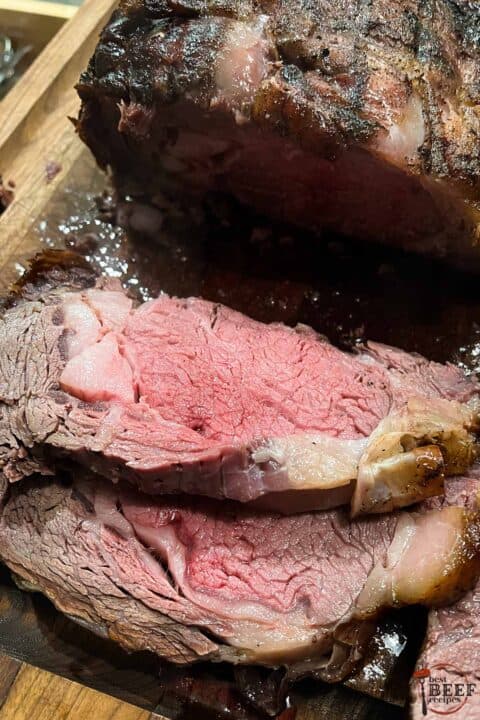
Video
Notes
- Make absolutely sure to use a roasting pan with a rack and place the rib roast towards the back of the refrigerator for the coldest, driest air.
- For best results, use a bone-in prime rib. The bones help retain moisture and flavor in the meat, which is especially important with dry aged rib roast!
- You don't need to worry about tying the prime rib as it ages, but tie the prime roast before cooking it. Dry aging makes the meat so tender and soft, it needs to be helpd together or it can fall apart from the weight of the bones!
- If you don't want the fridge to smell like beef, place a box of baking soda next to the rib roast in the fridge. This will keep the smell down.
- This process is easy, but it takes a long time and a lot of fridge space. Plan accordingly to set aside enough space without crowding too many things around the beef!
- Actual nutrition values will vary based on the recipe used for cooking the prime rib and the weight of the roast you use.
Nutrition
- Grilled Beef Tenderloin - March 14, 2024
- Meatball Seasoning - March 5, 2024
- Burger with Egg - March 5, 2024


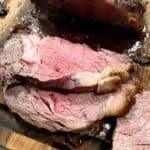
Richard Willson says
Hello, I’ve been doing a lot of research and plan on dry aging (for the first time) a large rib roast for 50 days in an umai bag and was curious that if I was going to roast it traditionally in an oven (compared to slicing it as steaks and grilling) if I even needed to worry about removing the pellicle as the process should ‘reconstitute’ the hard dry exterior and add to its complexity. Am I to understand this is how you do it?
Isabel Laessig says
Hi Richard! I have yet to try dry aging with an umai bag, so to be honest, I'm not certain. But personally, I think if I were to try this myself, I would remove the pellicle.